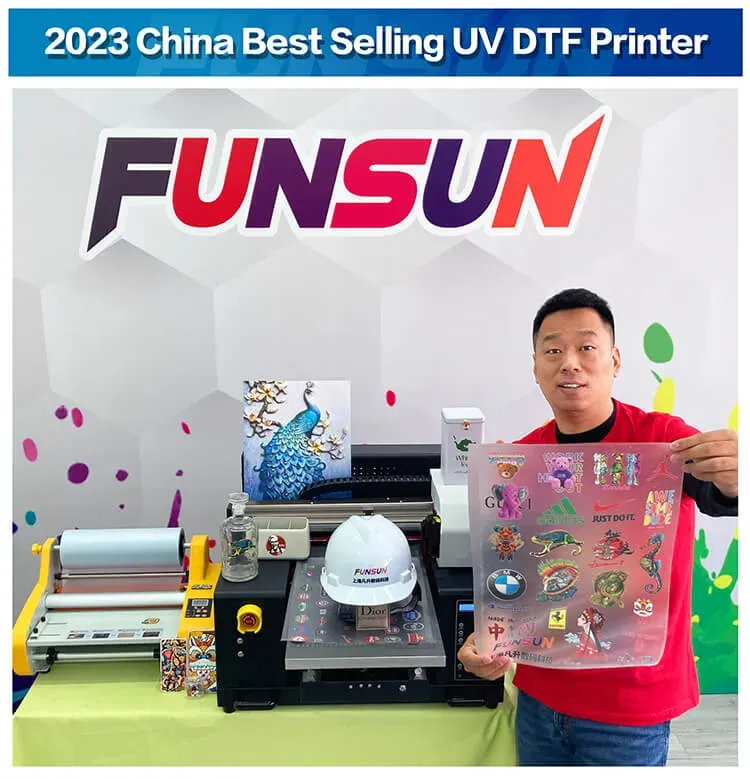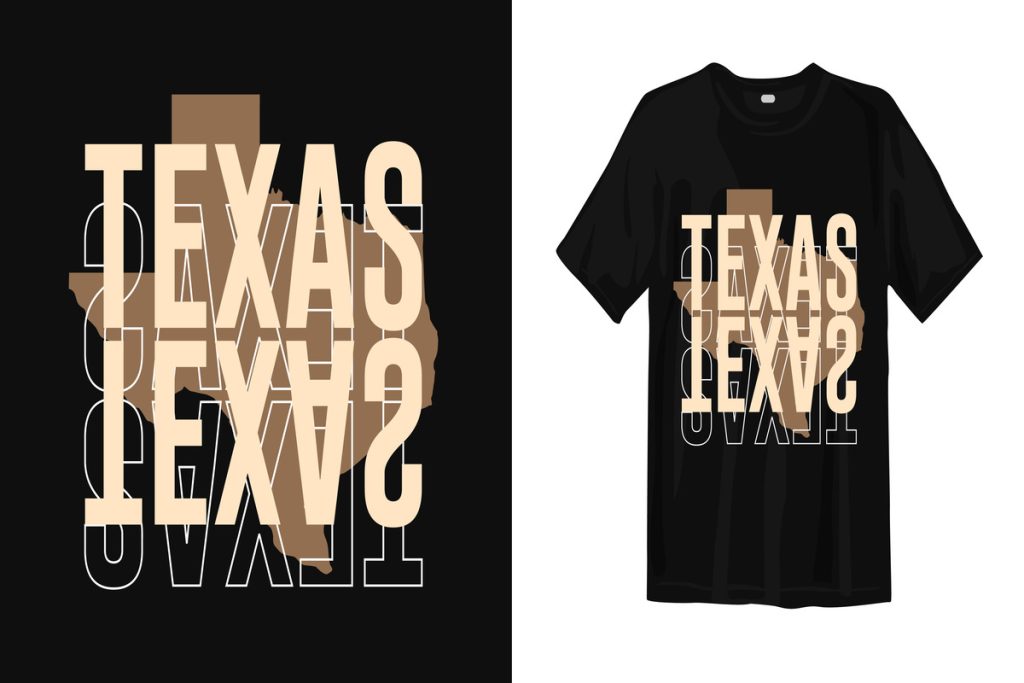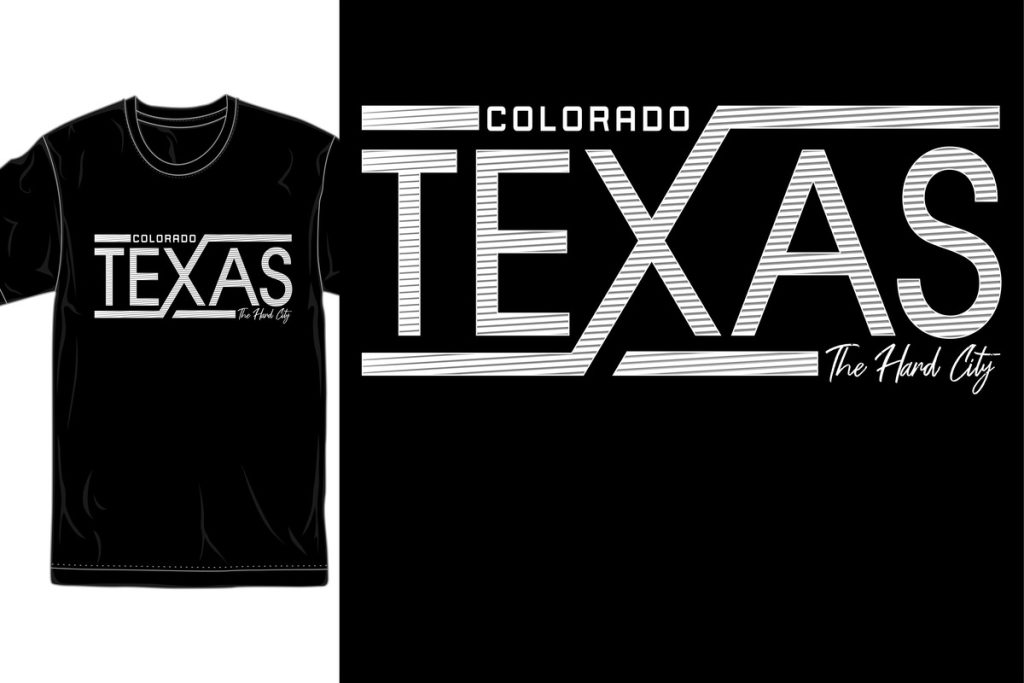In the dynamic world of textile printing, UV DTF printing has emerged as a groundbreaking technology that promises to transform traditional methods. This innovative printing technique utilizes UV-curable inks to achieve vibrant and detailed outputs on a variety of substrates, extending beyond just fabric to include materials like wood, metal, and glass. With its impressive design capabilities, UV DTF printing not only enhances artistic expression but also emphasizes sustainable printing practices through reduced energy consumption and waste. By doubling down on operational efficiency, it allows businesses to meet the ever-increasing demand for quick turnarounds while delivering stunning visuals that capture the essence of the intended message. As we delve deeper into the realm of UV DTF printing, the potential for revolutionizing the textile industry becomes increasingly apparent.
Also known as UV Direct-to-Film printing, this innovative approach to textile decoration is redefining how designs are applied across a broad spectrum of materials. By combining the benefits of UV inks with the versatility of transfer film, this method enables detailed prints that cater to both practical and artistic needs. The shift towards this advanced printing solution not only addresses the demand for customization but also champions sustainable practices, crucial in today’s environmentally conscious market. Furthermore, adopting UV DTF techniques can significantly enhance operational workflows, allowing businesses to produce high-quality outputs swiftly and efficiently. With its expanding applications, UV DTF printing stands at the forefront of modern printing technologies, attracting interest from diverse industries eager to innovate.
Understanding UV DTF Printing and Its Applications
UV Direct-to-Film (UV DTF) printing is a groundbreaking technology in the textile printing sector that utilizes ultraviolet light to curate vibrant images on special transfer films. This process allows for detailed and high-resolution prints that can be applied to a variety of substrates, including textiles, wood, metal, and glass. By utilizing specially formulated UV inks, UV DTF printing provides designers with the flexibility to create striking visuals that cater to a wide array of project requirements, from fashion apparel to custom promotional items.
Unlike traditional Direct-to-Film methods, which primarily focus on fabric materials, UV DTF printing opens up vast possibilities for designers and manufacturers. The technology can seamlessly integrate with various materials, allowing for diverse applications across industries. For instance, businesses seeking to print unique patterns or designs on non-textile surfaces can capitalize on the capabilities of UV DTF printing, thus expanding their market reach and enhancing product offerings.
The Advantages of UV DTF Over Traditional Printing Methods
A primary advantage of UV DTF printing is its versatility compared to conventional printing methods. Traditional textile printing techniques often limit businesses to a narrow range of fabrics and designs, while UV DTF allows for high-quality prints on an extensive variety of materials. This adaptability not only enables brands to explore new artistic avenues but also fosters creativity in product development, as they are no longer restricted by the fabric limitations of traditional methods.
Additionally, UV DTF printing streamlines production processes by significantly reducing both time and labor costs. Unlike traditional DTF that requires long drying times, UV inks cure instantly upon UV exposure. This leads to shorter turnaround times, which is crucial in today’s fast-paced market, where timely delivery is essential for customer satisfaction. The operational efficiency achieved through UV DTF printing positions companies to compete effectively and respond swiftly to changing consumer demands.
Sustainability and Environmental Impact of UV DTF
Sustainability has become an essential consideration in manufacturing practices, and UV DTF printing excels in this regard. The technology employs eco-friendly UV inks that do not emit harmful volatile organic compounds (VOCs), which are prevalent in many solvent-based inks used in traditional printing processes. By utilizing UV inks, businesses not only create a healthier work environment but also contribute positively to the planet by reducing harmful emissions.
Moreover, the instant drying capability of UV DTF printing minimizes waste, as there is no need for long waiting periods or excess energy consumption associated with traditional drying methods. This efficient use of resources aligns with the increasing demand for sustainable printing solutions, helping brands appeal to environmentally-conscious consumers while showcasing their commitment to reducing their carbon footprint.
Exploring the Enhanced Design Capabilities of UV DTF
UV DTF printing introduces a new frontier in design capabilities, allowing for the creation of meticulous and vibrant prints that were previously challenging to achieve with traditional methods. This technology enables artists and designers to experiment with a variety of finishes, textures, and effects, resulting in intricate designs that can incorporate tactile elements, such as embossed graphics and mixed media applications. Such creative freedom is invaluable in industries that thrive on innovative product design.
The high-quality output facilitated by UV DTF printing fosters opportunities for brands to create visually appealing products that stand out in competitive markets. With the ability to achieve rich color saturation and remarkable detail, products printed using this technology not only meet aesthetic requirements but also authenticate brand identity and message in a highly saturated textile market.
Operational Efficiency and Cost-Effectiveness of UV DTF
The operational efficiency associated with UV DTF printing translates directly into cost benefits for manufacturers. Businesses can achieve faster production speeds and shorter project timelines due to the quick curing capabilities of UV inks. This immediacy reduces labor costs and enhances productivity, allowing companies to accommodate larger orders with minimal additional overhead while maintaining high quality.
While the initial capital investment for UV DTF equipment may be higher than traditional printing setups, the long-term return on investment is notable. The combination of increased production rates and decreased waste results in a significant reduction in operational expenses. As companies adapt to the evolving demands of the textile market, UV DTF printing emerges as a financially savvy choice that enables sustainable growth.
Current Trends and Future Developments in UV DTF Technology
The landscape of UV DTF printing technology is continuously evolving, driven by ongoing innovations and advancements. Recent launches of enhanced UV DTF systems by manufacturers cater to the growing demand for versatility and efficiency in textile printing. These advancements not only improve print quality but also expand the potential applications of UV DTF beyond textiles into areas like stickers and specialized printing projects, demonstrating the technology’s expansive capabilities.
As more companies recognize the benefits of UV DTF printing, the market is witnessing an influx of consumer-grade UV printers that democratize access to this technology for small businesses and hobbyists. This democratization fosters creativity and innovation within the industry, as users experiment with new applications and designs, which in turn drives further developments and enhancements in UV DTF technology.
Frequently Asked Questions
What are the advantages of UV DTF printing over traditional textile printing methods?
UV DTF printing offers several advantages over traditional textile printing, including the ability to print on a wider range of materials, not just fabrics. The use of UV inks allows for vibrant and detailed prints with quicker curing times, improving operational efficiency. Additionally, UV DTF printing emphasizes sustainability by minimizing waste and energy consumption, making it a more eco-friendly option.
How does sustainability play a role in UV DTF printing?
Sustainability is a key focus in UV DTF printing, as the process utilizes UV-curable inks that are free from harmful VOCs (volatile organic compounds). This reduces emissions and creates a healthier working environment. Furthermore, UV DTF printing’s instant curing capability means that it consumes less energy and generates less waste compared to traditional printing methods, appealing to environmentally-conscious consumers.
Can UV DTF printing produce intricate designs and textures?
Yes, UV DTF printing enhances design capabilities by allowing for intricate designs and textures to be incorporated into the prints. This technology supports the creation of tactile effects, metallic finishes, and even embossing, enabling designers to explore artistic expressions not possible with traditional textile printing.
What materials can UV DTF printing be used on besides textiles?
UV DTF printing is versatile and can be used on a variety of substrates beyond textiles. This includes materials such as wood, metals, glass, and plastics, making it suitable for diverse applications like promotional products and unique custom items.
What are the operational benefits of using UV DTF printing technology?
Using UV DTF printing technology can significantly enhance operational efficiency. It features faster production times due to the quick curing of inks and improved print quality. This means businesses can achieve quicker turnaround times, meeting the demands of today’s fast-paced market while reducing overall costs related to printing.
Is UV DTF printing cost-effective for businesses?
While the initial investment in UV DTF printing equipment may be higher than traditional methods, the long-term cost benefits often outweigh this. Faster production rates, reduced waste, and the ability to print on a wider range of materials can lead to increased profitability and market flexibility for businesses.
| Key Points | Details |
|---|---|
| What is UV DTF Printing? | A printing method that uses UV-curable inks on transfer films for prints on various substrates including textiles, woods, metals, and glass. |
| Benefits Over Traditional Printing | Greater adaptability to various materials, allowing for a wider range of applications in the fashion and promotional sectors. |
| Sustainability | Low waste and energy consumption due to instant curing of inks. Eco-friendly compared to traditional methods that use solvent-based inks. |
| Enhanced Design Capabilities | Ability to create intricate designs, metallic finishes, and textures, allowing for greater artistic expression. |
| Operational Efficiency | Improved speed and quality lead to faster turnaround times, crucial for modern market demands. |
| Cost Implications | While initial costs are higher, long-term savings from faster production and reduced waste can enhance profitability. |
| Latest Developments | Innovations, including consumer-grade UV printers, expand market accessibility and applications of UV DTF. |
Summary
UV DTF printing represents a significant advancement in the realm of textile printing technology. This method’s versatility and adaptability allow for vibrant, high-quality prints across a diverse range of materials, from fabrics to metals, making it suitable for various applications. With its focus on sustainability and operational efficiency, UV DTF printing not only meets modern environmental standards but also enhances productivity, assuring businesses of quick turnaround times and cost-effectiveness. As this innovative technology continues to unfold, it promises to reshape the textile industry, providing endless possibilities for creativity and design, while also appealing to eco-conscious consumers.



